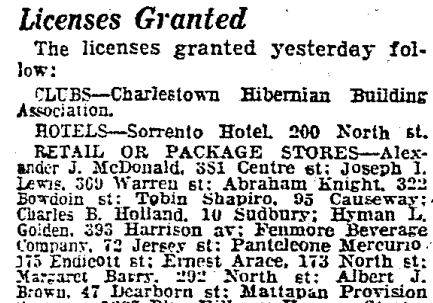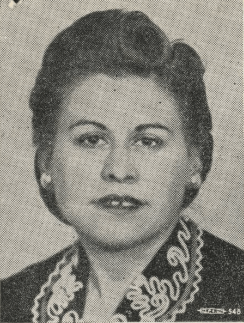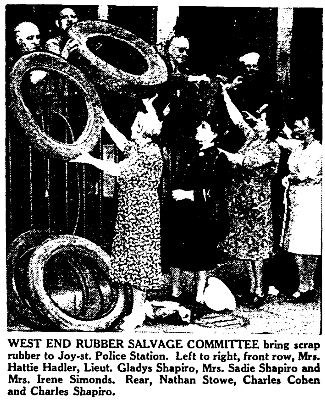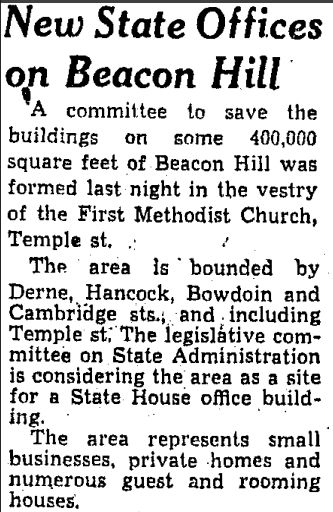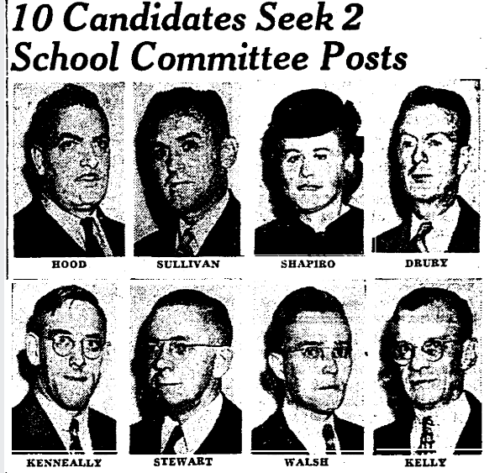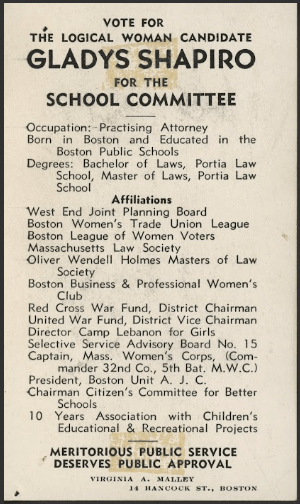Gladys Shapiro: A Life Committed to Community and the Law
One of the few independent female lawyers of her day, and a staunch supporter of her community, Gladys Shapiro became one of the most influential women to emerge from the West End.
Born to Charles and Sadie Shapiro on September 15, 1911 at the Boston Lying-In Hospital, Gladys Shapiro grew up in family homes at 10 Eaton Street and later on Hancock Street in the West End. Her father, Charles, owned and managed the family business, Shapiro’s Liquors (also known as Causeway Liquors) at 95 Causeway Street. Shapiro’s grandfather originally started the business as a tonic manufacturing plant in 1886. After procuring one of the first post-prohibition liquor licenses issued in Boston, Charles began selling liquor from there in 1933.
Both of Shapiro’s parents were heavily involved in the West End neighborhood. West Enders referred to Charles as the “Mayor of the West End”, due to his “keen interest in the community,” especially his concern for local young people. Shapiro wrote that her father “would never sell to a drunk” from his store, but instead sent tipsy customers for a free meal at the A&A Lunch. Sadie Shapiro participated in local politics and generously donated to West End churches. Undoubtedly, her parent’s goodwill became an inspiration for the young girl.
At an early age, Shapiro took interest in the law and was an avid reader of stories concerning court cases and the lawyers involved. After attending Girl’s High School, Shapiro studied at the all-women’s Portia Law School (now the New England School of Law). She passed the Massachusetts bar exam in 1937. Not interested in the work offered to most female lawyers at the time (“stuck in a corner somewhere doing probate, taxes, or something of that sort”), Shapiro opened her own practice. Some of her first clients were the push-cart peddlers who hawked produce, fish, and other sundry items throughout the West End. Because of her family’s business interests, Shapiro specialized in liquor law and licensing and later served as the national vice president of the Women’s Association of Allied Beverage Industries.
During WWII, Shapiro served as an officer in the Massachusetts Women’s Defense Corps (MWDC), and as director of the West End Women’s Defense School. The MWDC operated out of a building at Cambridge and Joy Streets, from where they organized events such as rubber drives, and conducted emergency medical training. In November of 1942, Lieutenant Shapiro and her unit were put to a real test during the Cocoanut Grove Fire. Being one of the closest medical resources to the disaster, the MWDC responded early and worked tirelessly for two days assisting in rescue efforts and helping with victim identification at the morgue on Grove Street.
When urban renewal came to the West End, Shapiro and her father fought against the planned destruction of their neighborhood by organizing property owners and tenants. As it became clear that this juggernaut could not be stopped, Shapiro represented West End property owners seeking fair compensation for eminent domain seizures. She was also instrumental in repealing a Boston Redevelopment Authority rule forcing property owners to pay the agency rent, despite being denied the right to collect rental income from their tenants. In 1954, Shapiro took on another fight against development, this one successful, as a leader of a group opposed to a state plan to demolish part of the north slope of Beacon Hill in order to erect a state office building.
Throughout the early part of her career, Shapiro ran for political office multiple times, but failed to ever gain an office. The closest she came to winning an election was in the 1941 Boston School Committee campaign, when she was runner-up with almost 50,000 votes. Afterwards, she ran for Boston School Committee again in 1945 and 1947, Clerk for Suffolk County of the Supreme Judicial Court in 1950, and Registrar of Probate of Suffolk County in 1960 (vacated by Mayor-elect John Collins). Shapiro consistently ran on a platform of equal pay for women.
Regardless of her failed attempts at winning a political seat, Gladys Shapiro proved to be one of the West End’s most successful and influential women. In addition to the achievements listed above, she devoted her time to numerous other organizations including the Young Women’s Hebrew Association, Youth for Brotherhood, American Jewish Congress (Vice President), the Women’s Democratic Party, and the West End Historical Association. She moved to the North Shore in 1970, living in Gloucester and Peabody, and continued to practice law into her eighties. In August of 2001 Gladys Shapiro died of heart failure. The West End Museum honored her service to the neighborhood by naming her a West End Heritage Honoree in 2016.
Article by Bob Potenza, edited by Sebastian Belfanti
Sources: Daily Boston Globe (1928-1960); Gladys Shapiro to The West Ender Newsletter, November 9, 1992.; Gladys Shapiro to The West Ender Newsletter, 1993.; www.legacy.com; Massachusetts Vital Records, 1840–1911; New England Historic Genealogical Society, Boston, Massachusetts.


